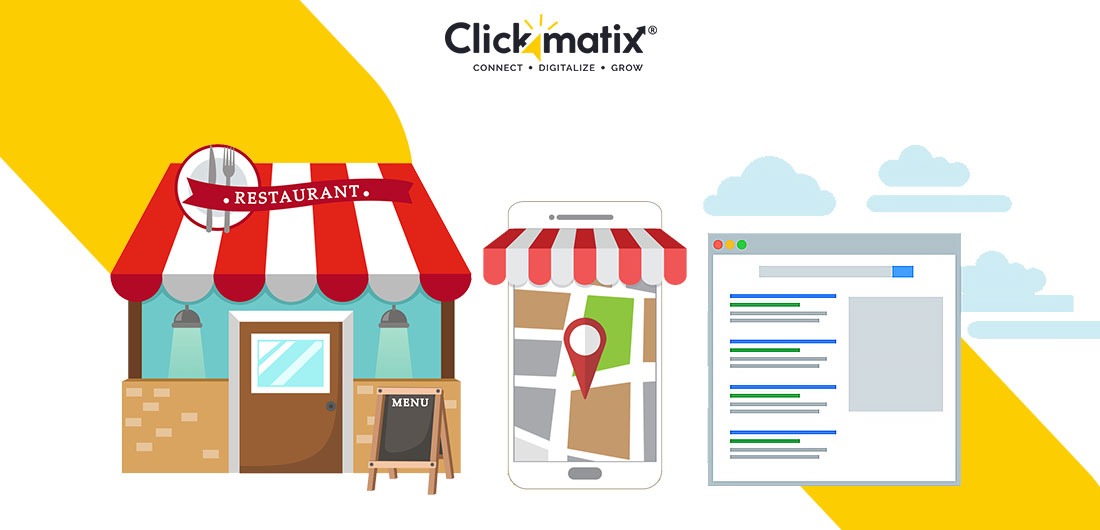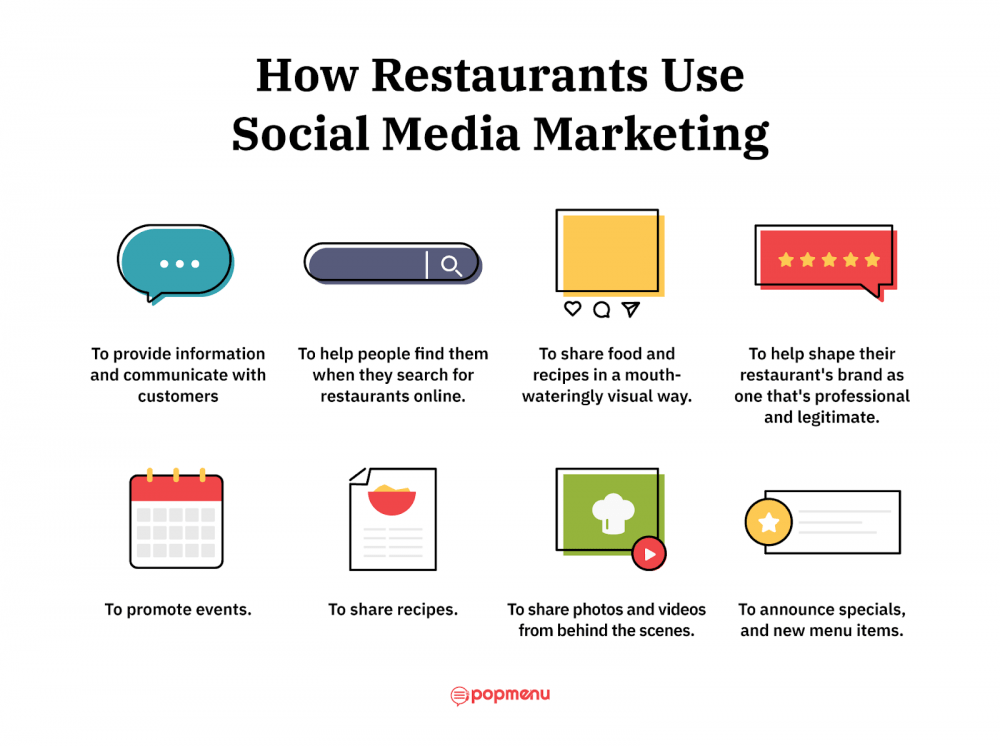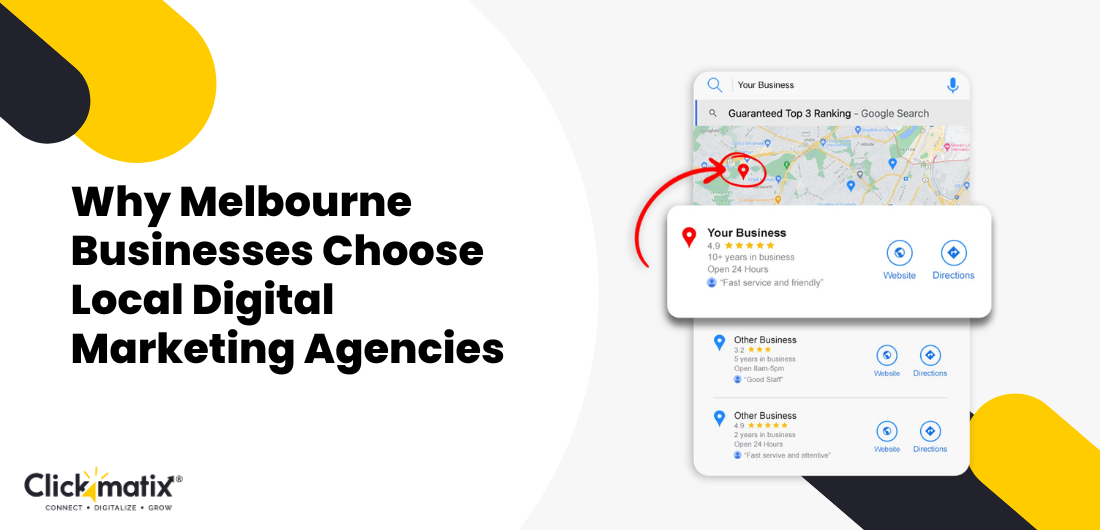
Creating a web presence for your restaurant is no longer an option. With the tremendous trend towards online presence in every business, restaurants must also step up their game. Customers would be able to locate you fast, effortlessly and by just sliding their fingertips around the screen a few times.
Restaurant SEO is the one and only sure-fire way to improve your online visibility.
Your digital footprint is becoming increasingly vital as online ordering and meal delivery challenge the traditional restaurant paradigm. Restaurants that have online ordering systems generate 130% more income than those that do not, and online ordering is expanding at a rate that is 300% faster than eating in. Furthermore, 60% of guests look at a restaurant’s menu online, and 50% examine the website.
As a result, restaurant owners have begun to devote time to search engine optimisation – or restaurant SEO – in order to ensure that their establishment appears on Google and other search engines.
SEO may appear to be technical, but it does not have to be! There are certain easy local SEO strategies you can do right now to convert your restaurant’s web presence into a key traffic driver. In this blog, we will walk you through 8 effective tips for enhancing the visibility of your website on search engines with SEO for Restaurant.
But, before we get into restaurant SEO tips, we would like to help you understand its importance and benefits.
#1 SEO is less expensive
The phrase “marketing” has a special negative meaning. Marketing, in the opinion of most restaurant owners and marketing teams, is merely an option for those who can afford it. To be sure, certain means of marketing are more expensive than others, providing larger businesses with a competitive advantage over smaller ones.
However, when compared to other kinds of web promotion, restaurant SEO is a more cost-effective approach. A small restaurant may exploit their Google My Business profile and location as part of a solid SEO plan with even a little SEO budget. As a consequence, even tiny eateries may improve their internet presence without having to spend their whole marketing budget.
#2 Enhanced Customer Engagement
Customers nowadays seldom have face-to-face interactions with their favourite restaurants. Social media has taken over the restaurant industry, with millions of pleased customers raving about their culinary experiences. Individuals engage with eateries mostly through online reviews. Enforcing good SEO behaviours will allow you to communicate with your clients, who will gladly return the favour. Solid restaurant SEO strategies will maintain your website at the top of search results and boost the probability of a consumer clicking on your site rather than an anonymous feedback site.
#3 Increased website traffic equals more reservations
The formula is straightforward: the higher a website ranks on the internet, the more traffic it receives. In fact, the first search ranking on Google has a click-through rate of 27.5% on average. Customers are more inclined to click on the first results related to their enquiry.
Maintaining your website’s placement among the top ranks in your field is the most effective strategy to ensure more traffic to your website, which always correlates to more diners in your restaurant. This approach is also effective when seeking to expand other restaurant products such as catering and private dining.
#4 More Customers Means Greater Visibility
Consider the internet to be a road system for a moment. Each term represents a separate route. The more keywords for which your website ranks, the more billboards or signs you have placed along that route. The enhanced internet presence you will obtain for your company is another opportunity to gain a new customer. Furthermore, ranking better for additional keywords might increase your company’s visibility and search engine results pages to even more potential clients.
Customers recall your company after 5-7 impressions, according to sophisticated data. Restaurant SEO is the catalyst for driving business contacts, but your company can only get these interactions if customers know who you are.
#5 Increases credibility
Trust is at the heart of consumerism. Before a consumer will spend money in your restaurant, they must have faith that you will provide excellent cuisine and service. A high Google rating establishes credibility with prospective clients who are looking for the top restaurants in their region. Consumers increasingly trust Google evaluations and internet suggestions more than they do their friends, according to statistics. Obtaining reviews and reacting to those reviews is an important aspect of restaurant SEO.
#6 Branding
Unless you are a big-known restaurant in your region, your potential clients will almost certainly type in your restaurant name, or brand, when contemplating dining with you. They do this in order to go through your menu and services. If your consumers continually locate your restaurant at the top, or near the top, of the search rankings, you may drastically increase the equity of your brand throughout the internet.
This is also a consideration when potential diners receive an offline referral from a friend or acquaintance. It adds instant confidence if customers can quickly locate your eatery. At the same time, if they are unable to locate your website or restaurant, you will most likely lose that consumer.
#7 Increased Conversions
Hungry clients are constantly looking for the best restaurants in their neighbourhood. But did you know that the keywords customers choose to reach these restaurants may be optimised not just to raise your web ranking but also to increase your conversion rates? Including popular keywords in your online content will assist Google in directing visitors to your site. This is only a minor aspect of on-site SEO.
For all parties concerned, this is a win-win situation. A customer learns about a fantastic restaurant that they may visit, and you can obtain a quality lead all because of your restaurant SEO.
#8 It is an investment
There are several great investments you should make in the restaurant business and marketing to better position your restaurant in the future. You’ve probably heard that there are no such things as instant SEO results. Quite rightly so. True, high-quality restaurant SEO is a long-term investment in your company’s future.
If you start extending your SEO strategy immediately, you will be able to attain considerably higher web rankings than your competitors who are ignoring this essential marketing channel.
Tips for search engine optimisation and Restaurant SEO
#1 Develop Your SEO and Content Strategies
Define your SEO strategy before diving into a plethora of tools, platforms, and interaction channels. This will significantly reduce your competition and provide you with a faster path to delivering quality visitors to your website. Begin by establishing the geographic region you want to own, since this will be where the majority of your clients will come from because they either live, work nearby, or are visiting. Next, utilise a reputable keyword research tool, to determine which keyword words and phrases your target audience employs and gets you to increase website traffic.
- High-level restaurant words
Some of the more generic options a searcher may use are “restaurants” and “centennial park restaurants.”
You may select your geographic emphasis to the location you identified and use both the generic term by itself (“restaurants”) and geographic modifier (“centennial park restaurants”), as well as other broad variants linked to your restaurant, in the keyword research tools.

Get weekly insights for revenue-shifting results
Sign up for our newsletter and be the first one to know about our exclusive offers, digital marketing news and updates.
|
|
Thank you for Signing Up |


- Niche-specific terminology
The following level is concerned with the exact categories into which your restaurant would fit. “Mexican restaurants,” “pizza,” “romantic eateries,” and other distinctive qualities and styles of cuisine are examples. If you’re not sure what precise categories or phrases to use, look at Google Maps or Google My Business listings. To view the general categories they use, use their filtering criteria in your location.
- Brand terms
Don’t assume that you’ll instantly be at the top of brand searches. Determine the number of individuals looking for your restaurant by name and compare it to the overall and niche-specific search traffic. As the value of individuals coming to your site is larger and trackable, make sure your site outranks the directory and social sites in your sector for your restaurant. With search phrases and volume data in hand, you may refine your attention to particular terms that match your restaurant at the high, category-specific, and brand levels.
Covering this range allows you to concentrate on what you want to measure and define in your material.
#2 Take the lead in Local Search
To get started with local SEO, claim, standardise, and optimise listings for your restaurant across all major and relevant local search properties.
This consists of a combination of search engine directories, social networking sites, and industry-specific directory sites. Moz Local and Yext are two tools that can assist you to identify what directories and external data sources exist and how to keep them up to date. A vital core aspect of local SEO is accurate NAP (name, address, phone) data that is consistent across all data sources.
Following that, you may concentrate on improving information fields such as the business description and business categories to coincide with the focus phrases determined in your keyword research.
Concentrate your efforts on the most important directories. Begin with Google My Business and work your way up to Yelp, TripAdvisor, Foursquare, CitySearch, different yellow pages, and other growing specialised review websites.

Image Source: Popmenu
#3 Use Social Media to Interact with Customers
Even while the direct influence of social media on SEO has long been contested, we do know that social media participation may bring consumers to your site.
Social media can be a strong customer journey touchpoint, demonstrating what clients may anticipate encountering at your restaurant.
As content, engagement, and popularity fit with the crucial SEO pillars of relevance and authority, a strong social presence frequently corresponds with a good organic search presence. Create a social media plan and then put it into action.
Make an effort to interact with your followers and respond to enquiries as soon as possible. The manner in which you communicate online shapes perceptions of your entire customer service and strategy.
Locate your target audience, engage them, and persuade them to influence others on your behalf.
Finally, by engaging with followers and pushing material on social media that directs users to your main website, you will see an increase in social network visits. This will then be correlated with the advantages of your other SEO initiatives.
#4 Encourage Customer Reviews and Testimonials
It’s practically difficult to conduct a restaurant search without seeing the review and rating scores in the search engine result. This is due to the fact that consumers prefer to click on higher star ratings.
Reviews are frequently viewed as part of a social media strategy and an engagement approach, but they can have a larger influence on visitors to your site via search results pages.
You may have your star ratings displayed in search results by using structured data markup, providing another compelling incentive for a user to go on your site rather than your competitor’s.
If your online ratings do not accurately represent the quality of your restaurant, develop an online review plan now to obtain as many reviews as possible to assist raise your score before applying the code that will pull the ratings into the SERPs.
A better star rating is likely to result in a greater click-through rate to your site – and hence more foot traffic.
#5 Create Distinctive Content
If you only have one location, your task is much easier than that of a multi-site local or national chain.
However, you must distinguish yourself from the competitors by providing enough original material on your website.
If your prospects and customers value your material, having a plethora of fascinating and informative information on your site will serve you well. Building a strong brand will result in improved rankings, more brand memory, and increased brand affinity.
Remember that not all content has to be written copy; you may convey your menus, in-house promotions, and other information through video, photography, and graphics.
The search engines are more concerned with context than with the keywords on your site. You can maintain a pipeline full of compelling information that helps you stand out from the competition by discovering and consistently developing fresh content.
For example, if you run a specialty restaurant, capitalise on it to differentiate yourself from the generic chain down the street.
Share information about the company’s founders, culture, and, most crucially, product. Give specifics about your menu, such as where you got your ingredients, how you developed recipes, and why your chicken marsala is the finest in town.
#6 Think about Content Localisation
Single-location eateries, once again, have an easier time of it here. Make sure you give adequate clues and context to consumers and search engines about where your business is and what region it services based on the judgments you’ve made about your market area.
Search engines and out-of-town visitors may not completely comprehend the unofficial names of neighbourhoods and places. You can aid everyone by offering material that is relevant to the community and does not just presume that everyone knows where you are. One example is a 100-site chain that had modest beginnings, with a single line produced for each location that was suited to the business, local history, neighbourhood, and community participation.
#7 Create a Mobile-Friendly Website
In 2018, more than 80% of the population utilised a mobile device to access the Internet. This figure has been steadily rising for several years and is anticipated to continue. People continue to browse on laptops and desktop computers, but mobile devices are gaining in popularity.
So, what does this mean for your restaurant website growth?
Based on this mobile trend, Google has made significant changes to its search algorithm. The mobile version of your restaurant website is now more crucial than the desktop version.
The bottom conclusion is that non-mobile-friendly websites are less likely to show in search results. So, how can you ensure that your website is mobile-friendly?
If you have someone else develop or maintain your restaurant website, be sure that your design is “responsive,” which means that the information on each page changes to the screen size of the visitor’s device.
When constructing or updating your website, consider responsive frameworks if it is a do-it-yourself project. Many popular WordPress themes now come pre-packaged with responsive frameworks, allowing sites to seem optimised for both mobile and desktop users.
#8 Estimate Your Efforts
This might have been tip number one, but I’m adding it as the final one for restaurant SEO because it is essential throughout the process. There is something to do and apply from the previous nine recommendations. However, before embarking on any area of optimisation, ensure that your efforts are quantifiable. When you invest in your strategy, you want to know which components are working, which aren’t, and where your efforts were (and are) most effective in terms of ROI.
Track exposure, engagement, and conversion metrics as far as they may be linked to your business.
These restaurant SEO strategies, benefits, and tips will assist you in laying a solid basis for your restaurant SEO, resulting in increased income and recognition for your restaurant business. The next stage is to find out how to deal with all of the increased traffic that will be coming through your doors!
In search for strategic sessions?
Let us understand your business thoroughly and help you
strategies your digital product.
It's time to call your business-
a brand!
Australian Owned Agency
Save Time and Money
Unbeatable Value
Where Work Gets Done

free Ecommerce SEO guide for Higher Sales & Conversion



THE ULTIMATE MARKETING GUIDE FOR LAWYERS



Youtube Ads Guide How to Advertise on Youtube



free Ecommerce SEO guide for Higher Sales & Conversion


It's time to call your business-
a brand!
Australian Owned Agency
Save Time and Money
Unbeatable Value
Where Work Gets Done



The Game-Changing Ecommerce SEO Guide That Will Blow Your Mind & Sales
With this Ecommerce SEO Guide, you'll be able to:
- Develop a Ecommerce SEO strategy.
- Build a content marketing strategy that aligns with your business goals.
- Convert your website visitors into paying customers.



Youtube ads guide how to advertise on youtube
With this Youtube ads Guide, you'll be able to:
- Develop a Youtube ads strategy.
- Build a type of ads of your own that aligns with your business goals.
- Generate revenue from youtube ads.
It's time to call your business-
a brand!
Australian Owned Agency
Save Time and Money
Unbeatable Value
Where Work Gets Done














 Australian Owned Agency
Australian Owned Agency Save Time and Money
Save Time and Money Unbeatable Value
Unbeatable Value Where Work Gets Done
Where Work Gets Done